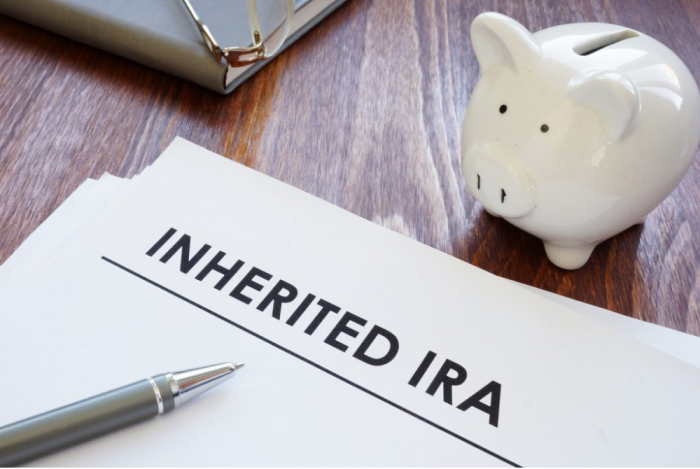
The IRA is an account set up for an individual that allows easy saving for a peaceful retirement phase. This is decades-old tax-free money that needs to be legally handed over to its nominated heirs. The tricky part is that if the paperwork is not done properly, you may lose a lot of money and an additional load of unnecessary paperwork will come your way.
Before you inherit an IRA and the paperwork formally begins, you’ll have to be patient while the descendant’s estate goes through probate. According to a Braintree trust administration lawyer, “Probate refers to the legal process of accounting for a decedent’s assets, discharging liabilities, preparing and filing final tax returns, and distributing any remaining assets to the beneficiaries, if there is a will, or the heirs if there is not a will.”
Here’s everything you need to know about an IRA inheritance.
Are You an Eligible Designated Beneficiary?
The beneficiaries of all IRA’s are divided into two categories; you’re either an Eligible Designated Beneficiary or a Non-Eligible Designated Beneficiary. The difference between the two categories lies between inheritance and leniency in taxation laws for the eligible designated beneficiary.
An Eligible Designated Beneficiary has no compulsion to draw out all their money in 10 years and can receive RMD (Required Minimum Distribution). However, non-eligible beneficiaries do not enjoy this privilege.
How Do You Know if You’re an Eligible Designated Beneficiary?
According to the SECURE Act 1, the following are considered Eligible Designated Beneficiaries. The original IRA holder’s minor child, the account holder’s spouse, a disabled or chronically ill individual, and an individual named by the account holder who’s at least 10 years younger than the original account holder. If you fall in the above-mentioned categories, your case of inheritance will be dealt with free of additional taxation.
If you’re a surviving spouse, you have a few options regarding what to do with an inherited IRA. You can name yourself the owner of the inherited IRA or you can roll out the money out of the original IRA into your pre-existing IRA. Once you have the access to the account, you can name yourself as a sole beneficiary or name further beneficiaries of your own.
How Important is the Beneficiary’s Age?
A beneficiary must be 18 years or above to have more control over how they manage their funds. A surviving spouse can let the money grow in their IRA until they reach the age of 72. So age does play a role in how your inheritance is passed on to you and how you plan to manage your funds.
Can Siblings Split an IRA between Themselves?
Siblings who’re older than 18 years of age can split an IRA. To split an IRA between siblings, the paperwork needs to be pursued within the first year of the original IRA holder’s death.
However, splitting an IRA between non-eligible designated beneficiaries is not always wise. According to the SECURE act, two or more siblings inheriting an IRA must follow the 10-year plan.
The 10-year plan dictates that all funds should be pulled out of the account within 10 years of the original account holders’ death. Along with that, all withdrawals will be taxable. Since the advantage of taking RMDs no longer assists non-designated beneficiaries, splitting the account will just add more to the amount of money paid in tax.
After an IRA holder’s demise, the siblings inherit the account money in an inherited IRA. According to the latest amendment in the SECURE Act, the inherited IRA no longer allows the account owners to take RMDs. Moreover, the beneficiaries need to empty the account in exactly 10 years. The money cannot be saved longer than a duration of 10 years.
When is it Advisable to Split an IRA?
Mostly in cases when an eligible designated beneficiary and a non-eligible designated beneficiary inherit an account together. Children younger than 18 years of age and surviving spouses have more tax deduction benefits when it comes to an inherited IRA. However, the same taxation laws don’t apply to a non-eligible designated beneficiary.
How can Original IRA Holders make Things Easier for their Heirs?
If you’ve been through the hassle of inheriting an IRA, you would certainly want to make things easier for your nominated beneficiaries. You can do that by splitting your IRA into different accounts and naming each account on your beneficiary’s behalf.
This will further ease down and smoothen the inheritance procedure. Once an individual passes away, the only remaining verdict of their wishes lies in what’s written in their beneficiary forms. So, make sure you’re careful while filling one.
Selling an inherited property can be a difficult decision, but it may be necessary to cover any outstanding debts or to distribute the proceeds among the beneficiaries. Before deciding to sell an inherited property, it’s important to consider factors such as the current real estate market, any tax implications, and the sentimental value of the property.








